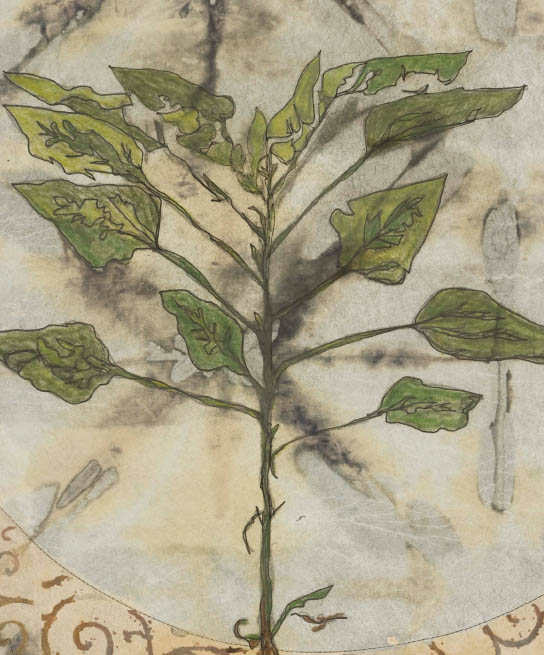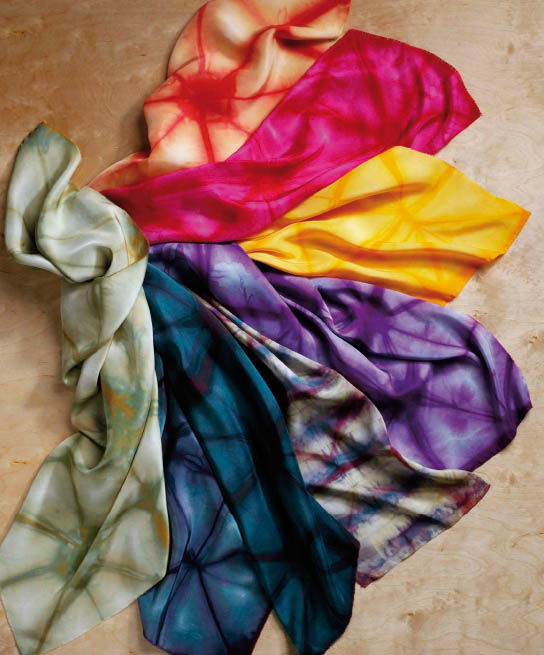ART CLOTH
A GUIDE TO
SURFACE DESIGN FOR FABRIC
JANE DUNNEWOLD
Editors: Elaine Lipson, Linda Griepentrog
Art Director: Liz Quan
Cover and interior design: Lee Calderon
Photography: Joe Coca
Photography pages 151153: Brent Kane
Production design: Katherine Jackson
2010 Jane Dunnewold
Photography 2010 Interweave Press LLC, except:
Pages 151153, 1996, 2010, Martingale & Company. Used with permission.
, screenprinted textile pattern by William Morris. All rights reserved. Used with permission.
, Works Progress Administration poster, 1937. Collection of the Library of Congress,
Prints & Photographs Division, WPA Poster Collection. Used with permission.
All rights reserved.
 | Interweave Press LLC 201 East Fourth Street Loveland, CO 80537 interweavestore.com |
Library of Congress Cataloging-in-Publication Data
Dunnewold, Jane, 1954
Art cloth : a guide to surface design for fabric / Jane Dunnewold.
p. cm.
Includes bibliographical references and index.
ISBN 978-1-59668-195-8 (pbk)
ISBN 978-1-59668-617-5 (PDF)
ISBN 978-1-62033-181-1 (ePub)
1. Textile crafts. 2. Textile design. 3. Textile finishing. I. Title.
TT699.D83 2010
746--dc22
2010002777

Art cloth by Kathleen McTee, made with fiber-reactive dyes, discharge methods, and foil.
Dedication
To my favorite students everywhere.
Acknowledgments
I am grateful for the help I received from thoughtful and talented writers and editorsTricia Waddell, Linda Griepentrog, and Elaine Lipson. And also for the professional handling and photography provided by Interweaves talented artists.
Thanks to colleagues and students who were willing to share their samples and creative impulse with my readers.
And special thanks to my sisters, Ann, Ruth, and Mary; my mother, Elinor; and my daughter, Zenna, each of whom buoys and inspires me. I am incredibly fortunate to share this lifetime with them.

Jane Dunnewold, 2008.
Silk with fiber-reactive dye, soy-wax resist, hand coloring, pencil.
Contents
Art Cloth Fundamentals
Techniques and Processes

Paradise I, Jane Dunnewold, 2005.
Silk organza with silkscreened textile paint, handpainted thickened dyes, gold metallic paint printed with Thermofax screen, and gold leaf.
In 1994, woke up at four in the morning with the term complex cloth floating in my head. Little did I know how that epiphany would change my life. The term married together all of the printing and dyeing processes Id been studying and gave me a structure to combine them Thousands of yards later, complex cloth has evolved into art clothan art form understood and practiced by artists all over the globe.
This book is my opportunity to share art cloth with you. Not only have I produced thousands of yards of fabric, Ive been privileged to work with about a thousand students over the years since 1994. While I love dyeing and printing cloth, and the endless surprises that rise up from the printing table, I love more the delight and enthusiasm I witness in students when the process touches them in a way that often defies description. Who would have thought that making could change a life?
But making changed my life. At loose ends for the first twenty years of my adult life, making became my daily practice. Studio time is a creative gift we give ourselves, but it is also a meditation that can take us deep into ourselves, and if we are determined and rigorous, out the other side to balance and mental health. Thats what making has done for me.
I see it in workshops all the time. We live in a culture where we arent always honored as creative spirits and where personal ability is often discounted. But put twelve people in a classroom with a dye bucket and a few printing tools, announce that the inner critic must sit quietly and isnt allowed to play in this space, and edges soften. Ideas blossom. Making reigns supreme. Its not that frustrations cant ariseof course they do. I wrote this book because of what I know from all of those workshops. No one needs to reinvent the wheel; I can help.
You hold in your hands my best shot at sharing reliable processes with you. I hope youll read this, acquire a few supplies, and begin. Art cloth can be anything, but a great place to start is with the layering process. Perhaps as you add layers to your cloth, youll peel back a few about yourself. There is a rich opportunity to discover yourself through making.
Whether you work through this book cover to cover, or skim it prior to delving in, take seriously the challenge to make your work your own. The information is the foundation for you to build upon. Study it, work with it to master the techniques, and then add your own personal brand to the processes. Mix them up and combine them with other skills you already possess. No one will use the same images you invent and no one will combine processes in exactly the same way you combine them.
Be safe. Be careful, and strive to reflect who you are through the practice of making cloth. And let me know how its going.


A selection of dyed fabrics ready to become art cloth.
This book is designed to help you explore the infinite possibilities of art cloth. Most of us are eager to begin to manifest the designs we imagine. But first, you must have a reasonably methodical approach to trying out different methods and recording the results of your experiments, and a safe, comfortable, and appropriately equipped work space. This chapter offers my best pointers for creating a working environment that will allow your artistic vision to flourish.
When it comes to the nuts and bolts of making art cloth, you must make safety a priority. Actually wear your gloves and mask. Put buying a comfortable respirator first on your shopping list. Think twice before being seduced by chemical processes you cant possibly conduct safely in a home environment. Just because you can, doesnt mean you should! Safety tips for dyeing and discharging are detailed in , respectively.
And while youre at it, be judicious in your approach to environmental waste. Thrift stores are filled with stuff that can be adapted to studio use. You arent cooking in there. Use old electric skillets and tableware and all manner of other cast-off things as inexpensive outfitting for your very practical space.

Respirators and gloves are important for safety.
Setting up a work area is important. We all have different circumstances. Some folks have the luxury of a large dedicated space. Others have limited resources, space, and time. However it is, we make do with what we have. In the beginning, you wont know exactly what you need when it comes to time, space, and equipment anyway, so try to enjoy the process of figuring it out.
















